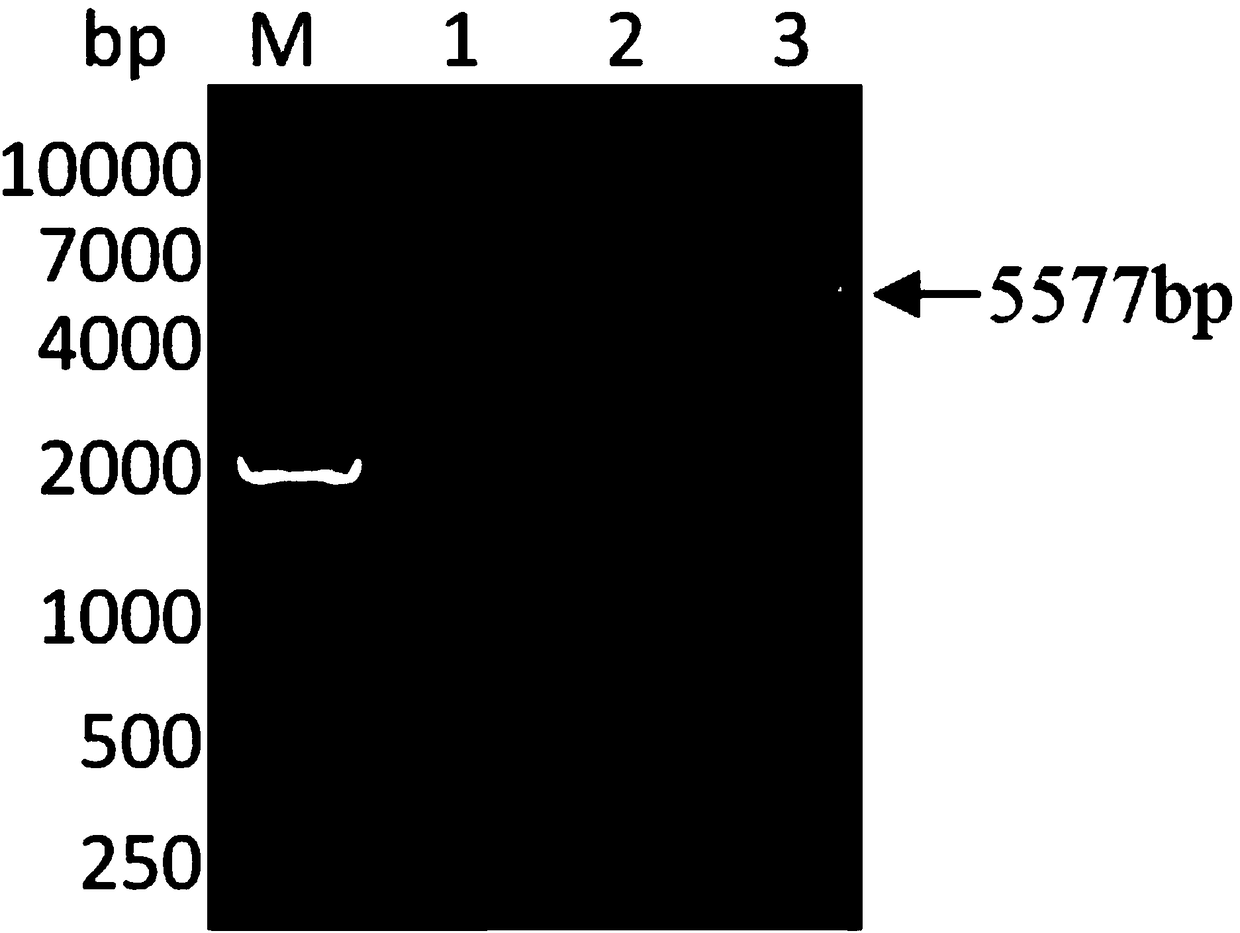Method for expressing duck-sourced avian influenza virus NS1 protein and application of method
An avian influenza virus, PTIEV4-NS1 technology, applied in the field of expression of duck-derived avian influenza virus NS1 protein, can solve the problems of low protein activity, high cost of cultivation, and low secretion efficiency
- Summary
- Abstract
- Description
- Claims
- Application Information
AI Technical Summary
Problems solved by technology
Method used
Image
Examples
preparation example Construction
[0028] 2) Preparation of NS1 gene cDNA: the viral RNA extracted in step 1) is reverse transcribed into cDNA by reverse transcription primer sequence 5'-AGCAAAAGCAGG-3';
[0029] 3) PCR amplification of NS1 gene:
[0030] Using FQNS1F-BamHI and FQNS1R-XhoI as primers, using the cDNA obtained in step 2) as a template, PCR amplifies the NS1 gene; wherein, the sequences of the FQNS1F-BamHI and FQNS1R-XhoI are as follows:
[0031] FQNS1F-BamHI: GGATCC ATGGACTCCAACACTGTGTCAAG, where the underlined part is the BamHI restriction enzyme site;
[0032] FQNS1R-XhoI: CTCGAG TCAGTGATGGTGATGGTGATGTTTATCGTCGTCGTCTTTATAATCCTTTGGAGAGAGTGGAGGTC, where the underlined part is the XhoI restriction enzyme site;
[0033] 4) Construction of TOPO clone positive plasmid and codon optimization: After the PCR amplification product obtained in step 3) was purified and recovered, the online software was used to analyze the codon usage bias of the NS1 gene and Tetrahymena, and then the NS1 gene was cod...
specific Embodiment
[0060] 1.1 Materials
[0061] The duck-origin avian influenza virus A / duck / Fujian / FQ2 / 2007 (H9N2) strain was isolated from Fujian in 2007 by our laboratory (GenBank accession number JF916709). The method of virus isolation is as follows: collect the trachea, lung, and kidney tissues of sick chickens and homogenize them in a sterilized glass grinder, make a suspension of 100 g / L with PBS, freeze and thaw twice, centrifuge at 2500 × g for 10 min, and take The supernatant was filtered and sterilized through a 0.22 μm filter for later use. Inoculate 10-day-old SPF chicken embryos with the treated tissue suspension through the allantoic cavity, incubate at 37°C with 0.2ml each, remove dead chicken embryos within 24 hours, observe twice a day, and collect aseptically for 48-96 hours The allantoic fluid was continuously passed for 3 generations, and the embryo fluid was aseptically recovered and stored at -30°C for future use. Rabbit anti-A / duck / Fujian / FQ2 / 2007 (H9N2) serum and Esc...
PUM
 Login to View More
Login to View More Abstract
Description
Claims
Application Information
 Login to View More
Login to View More - R&D Engineer
- R&D Manager
- IP Professional
- Industry Leading Data Capabilities
- Powerful AI technology
- Patent DNA Extraction
Browse by: Latest US Patents, China's latest patents, Technical Efficacy Thesaurus, Application Domain, Technology Topic, Popular Technical Reports.
© 2024 PatSnap. All rights reserved.Legal|Privacy policy|Modern Slavery Act Transparency Statement|Sitemap|About US| Contact US: help@patsnap.com










